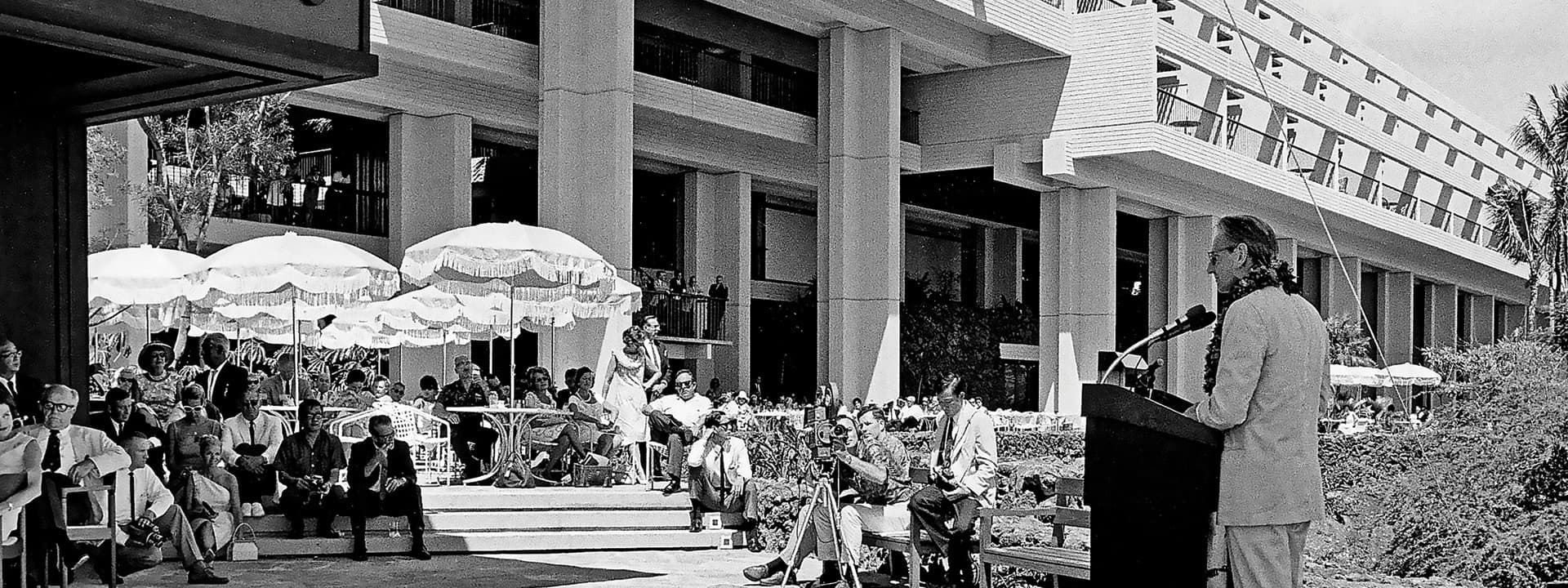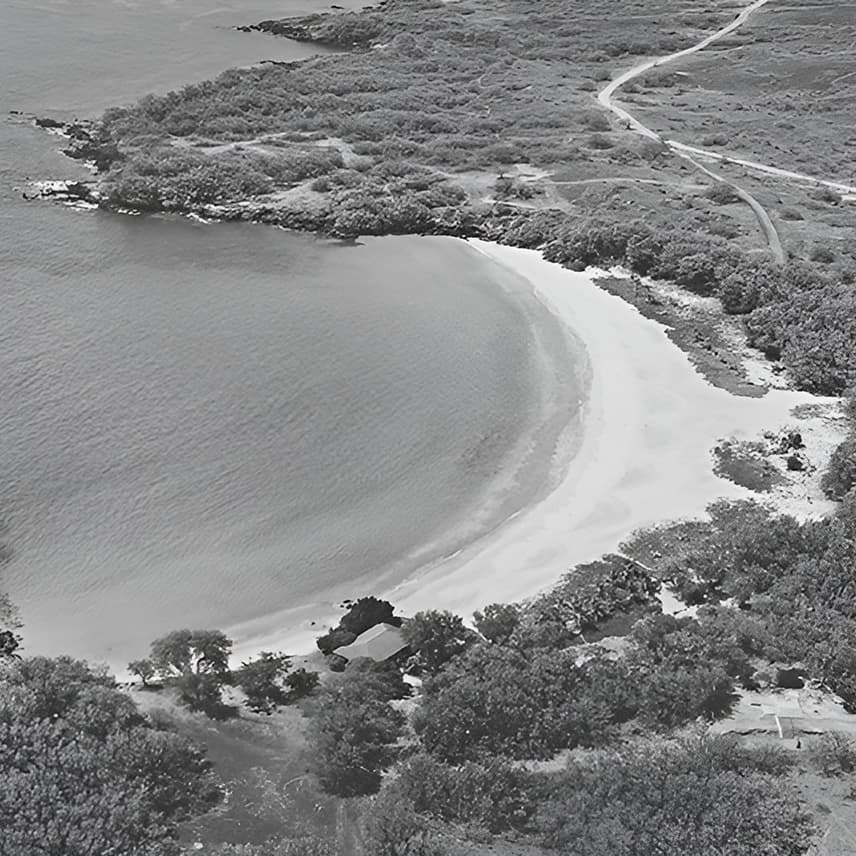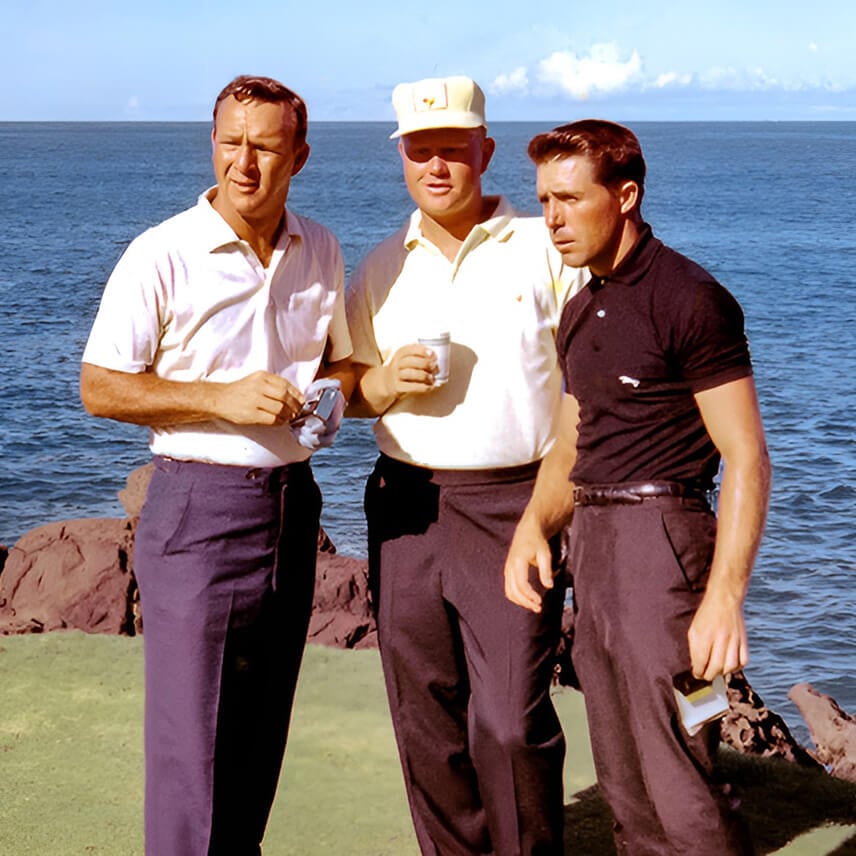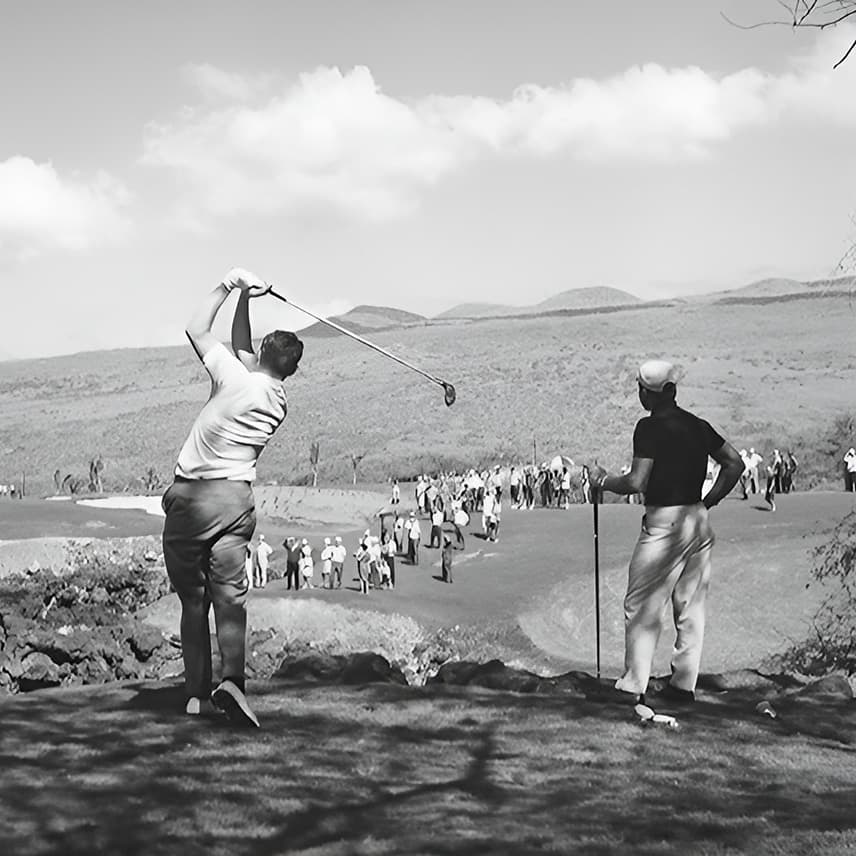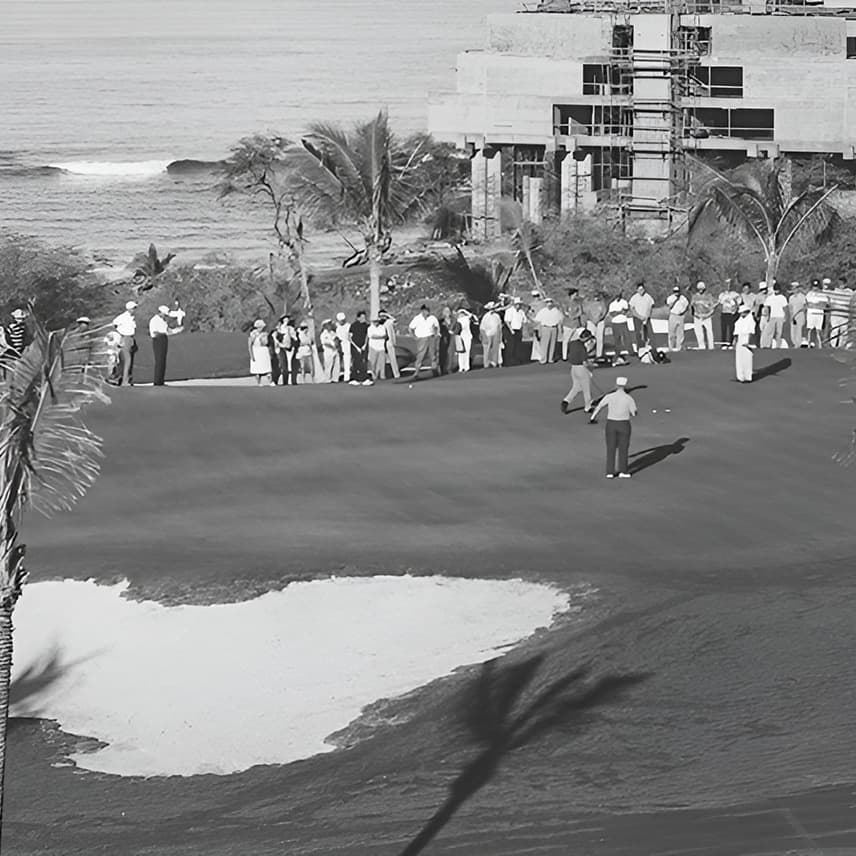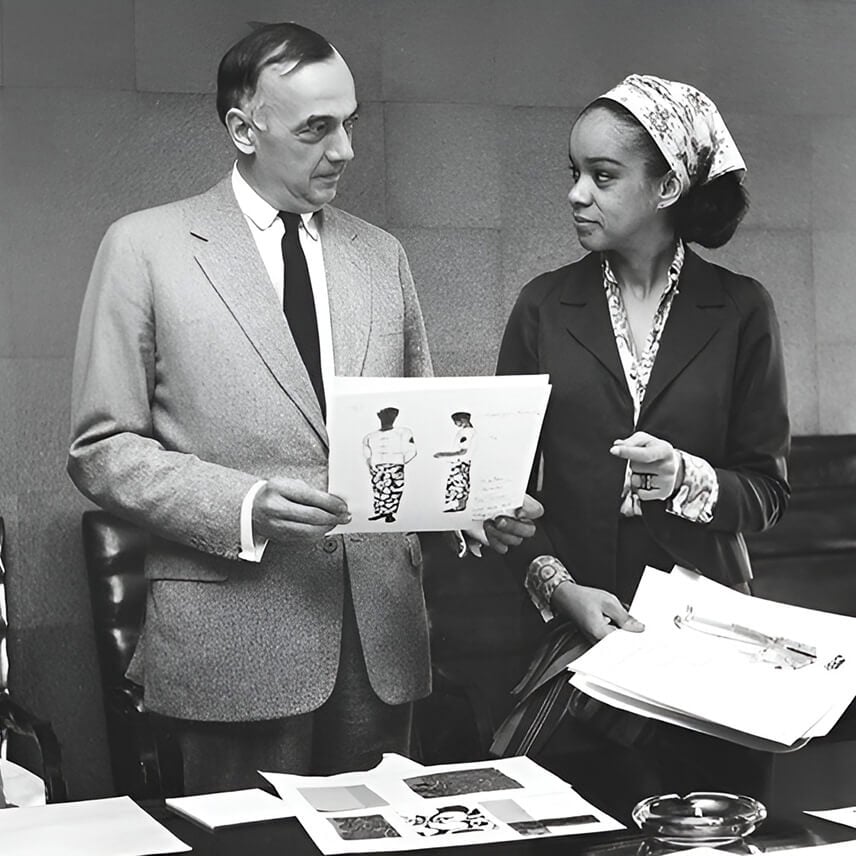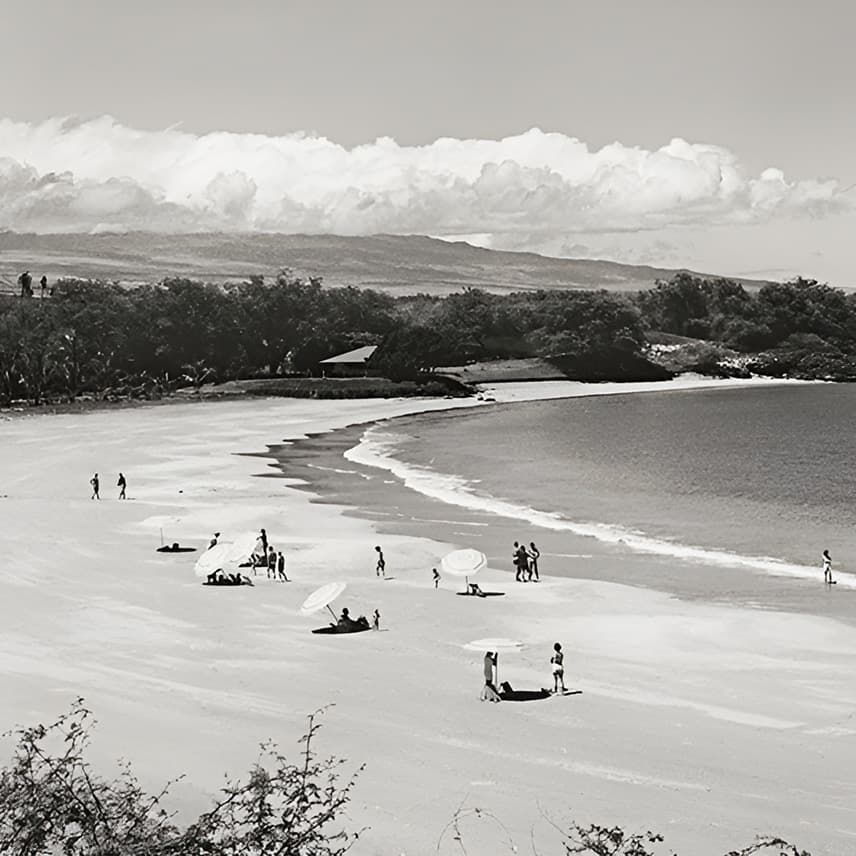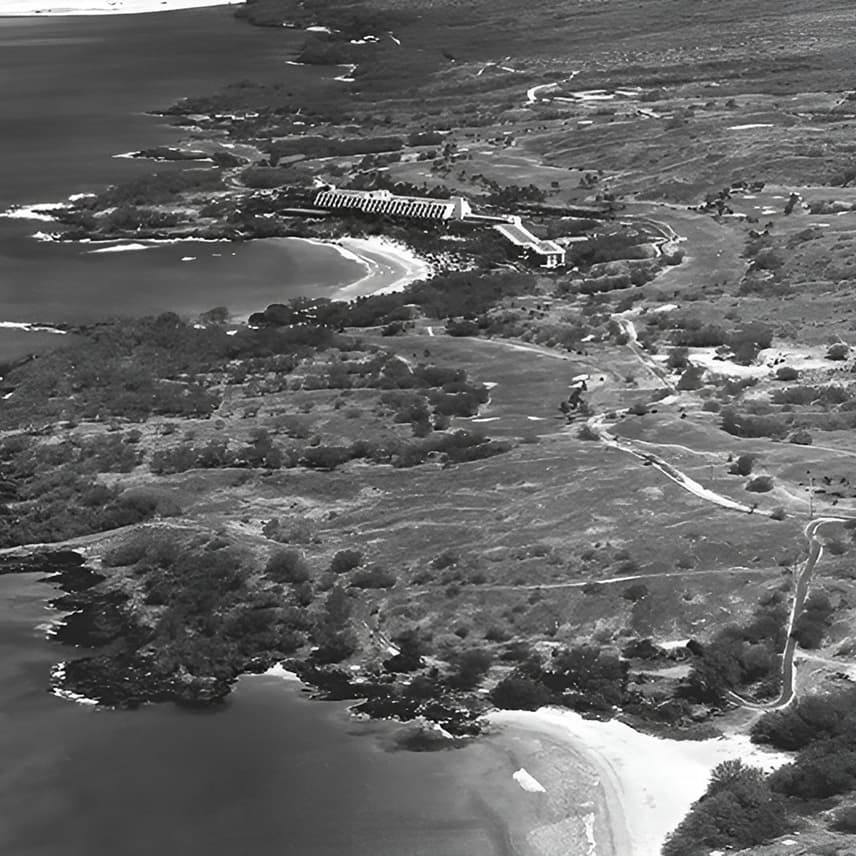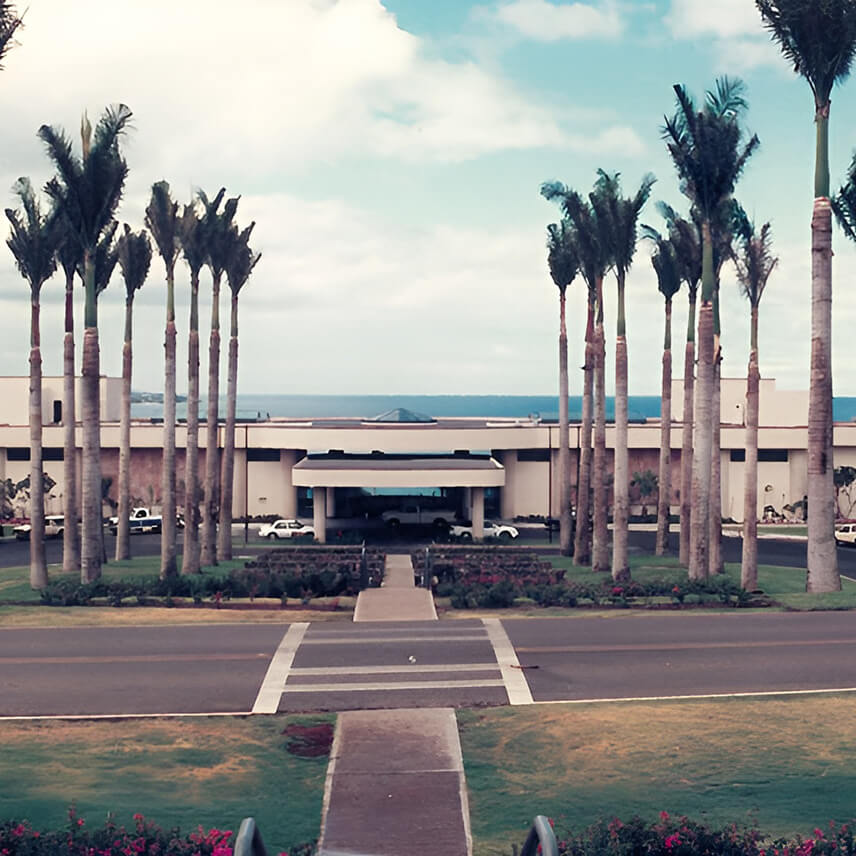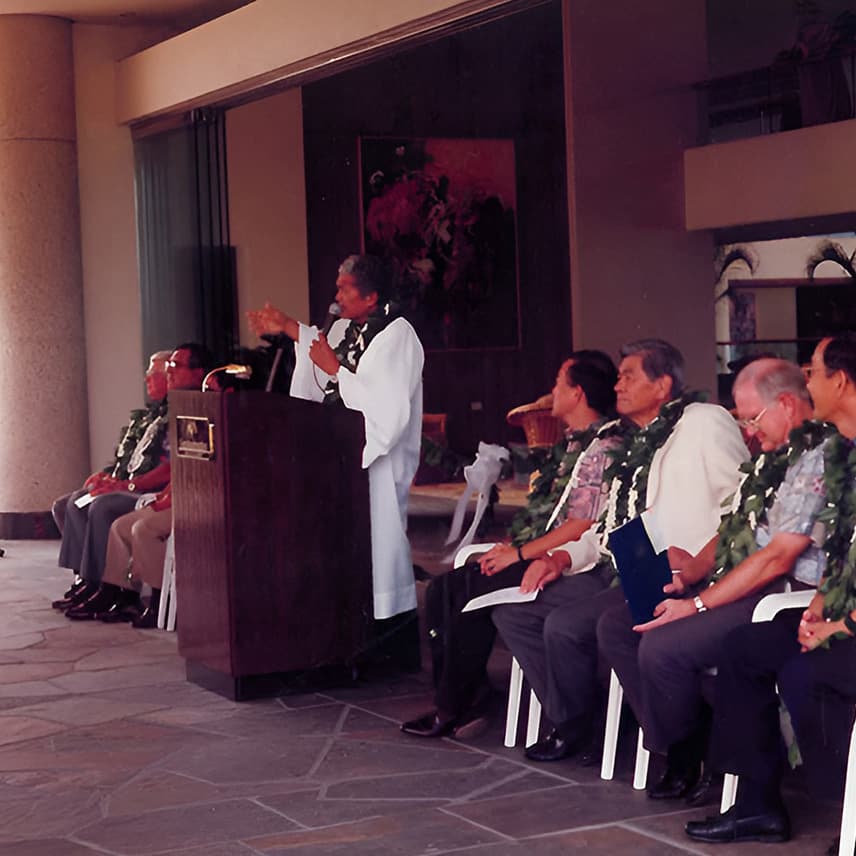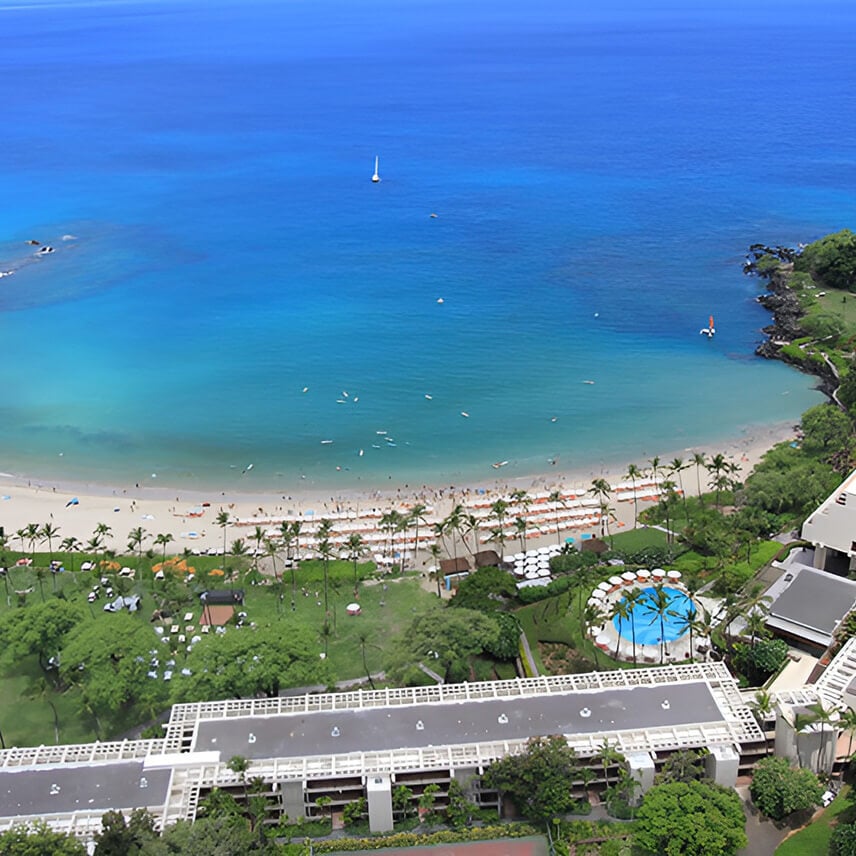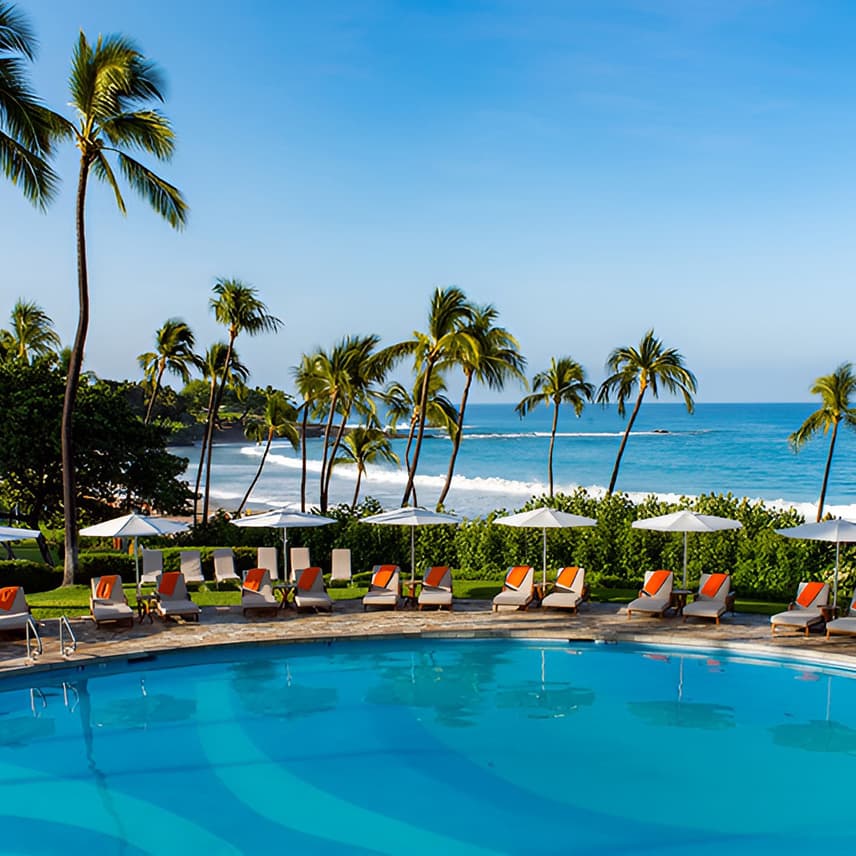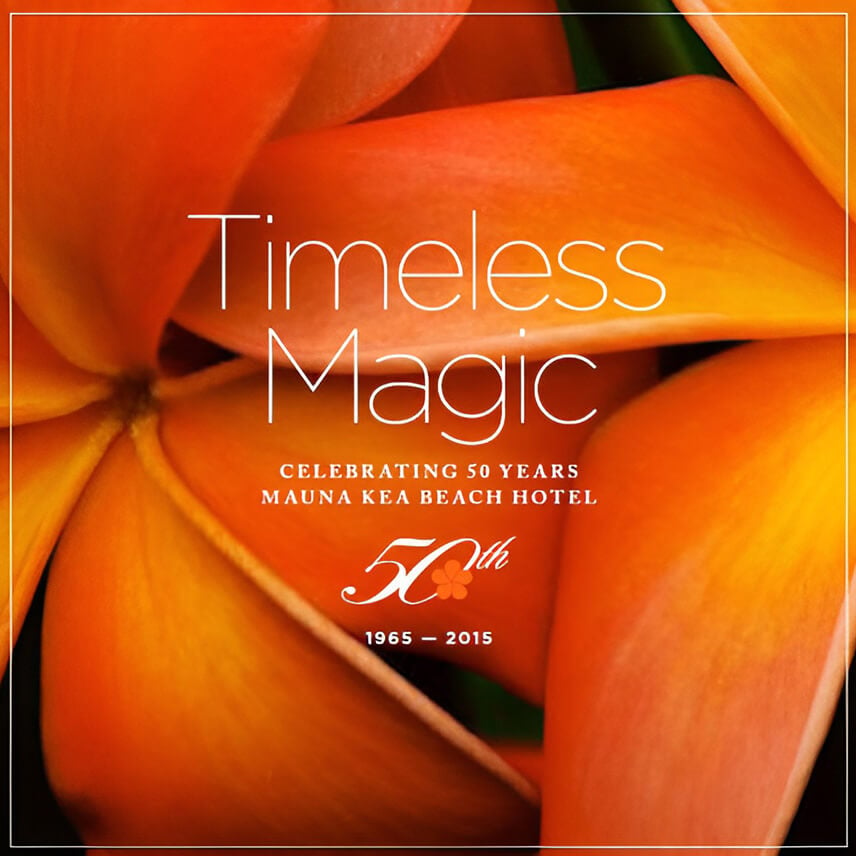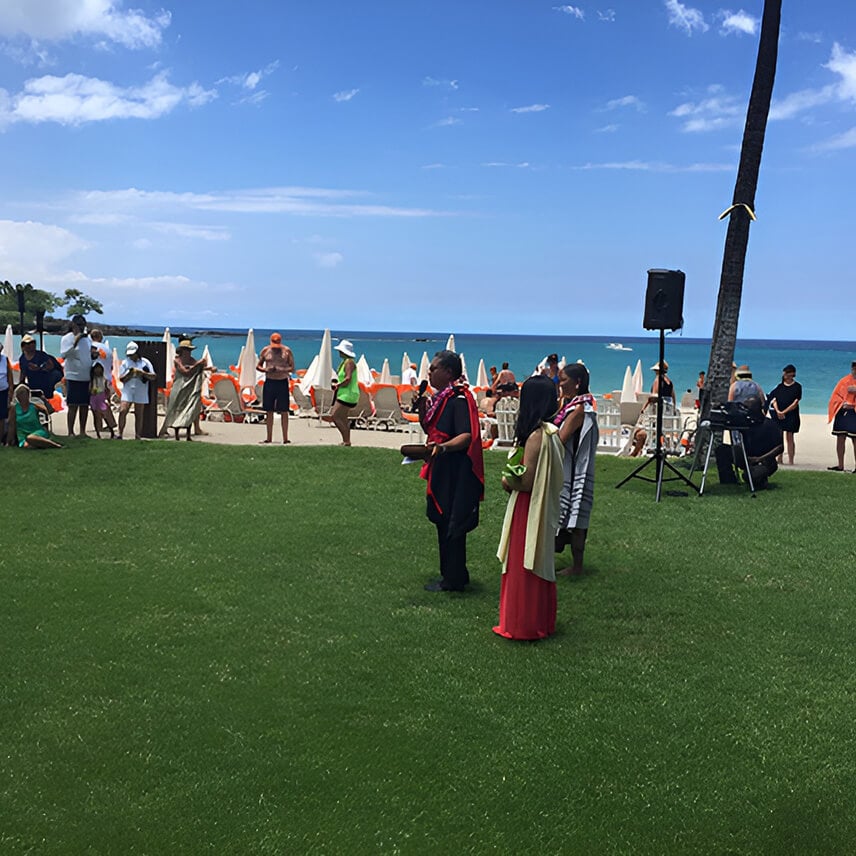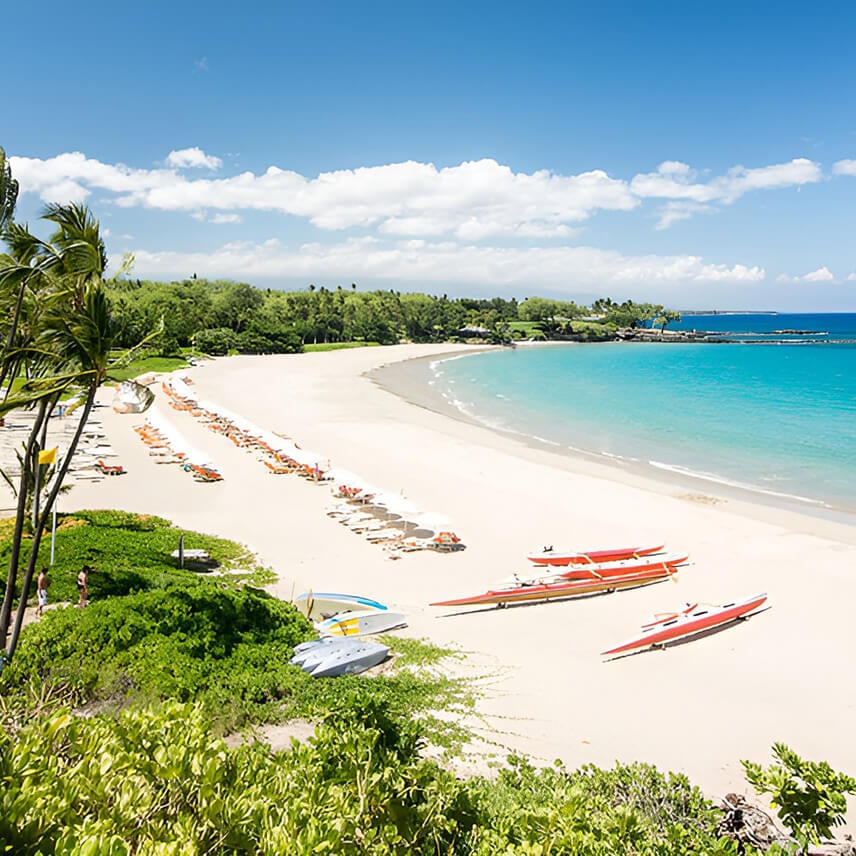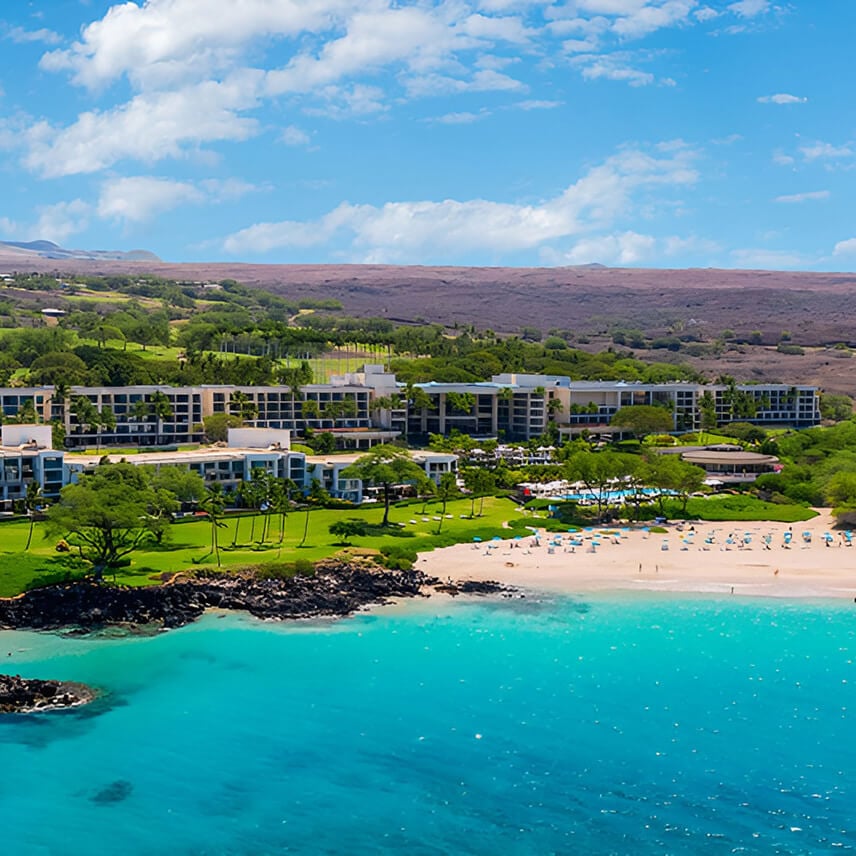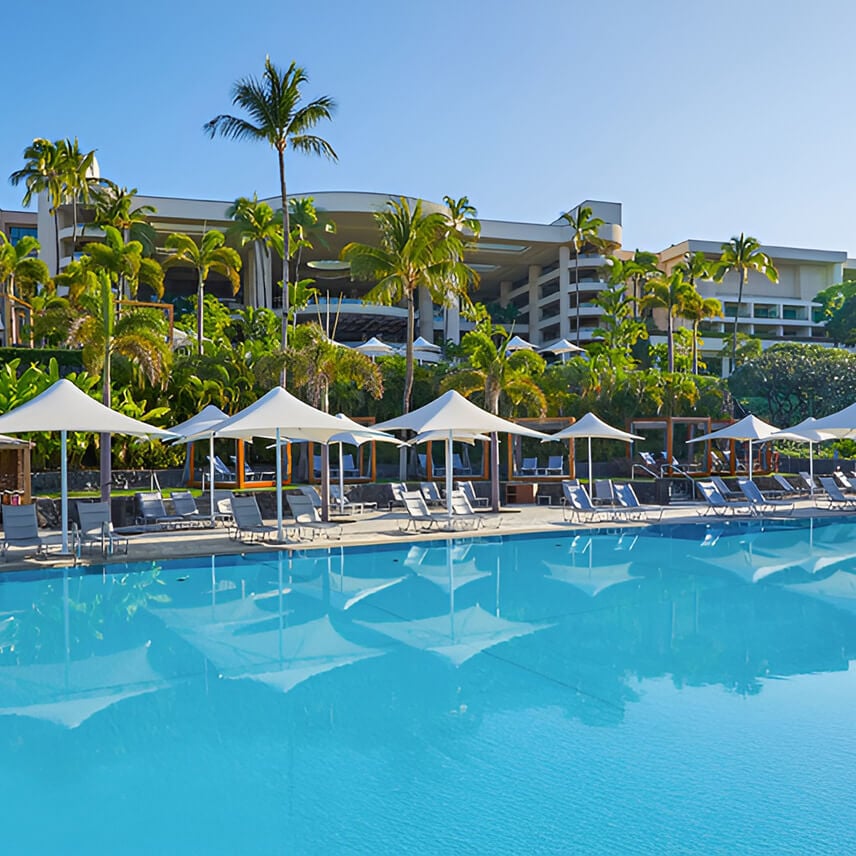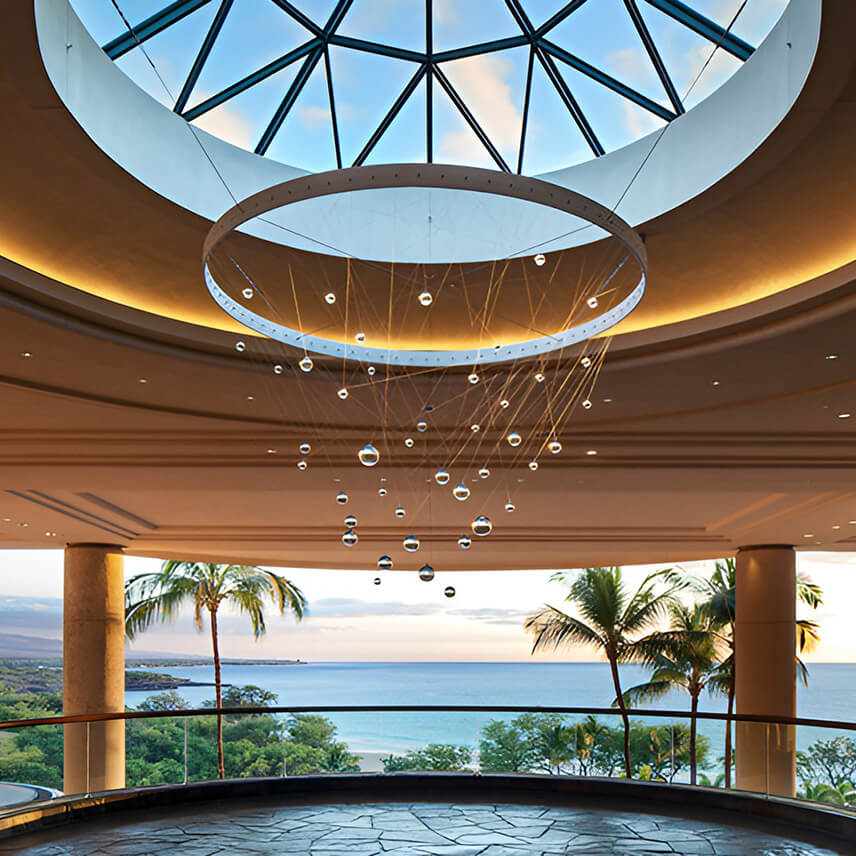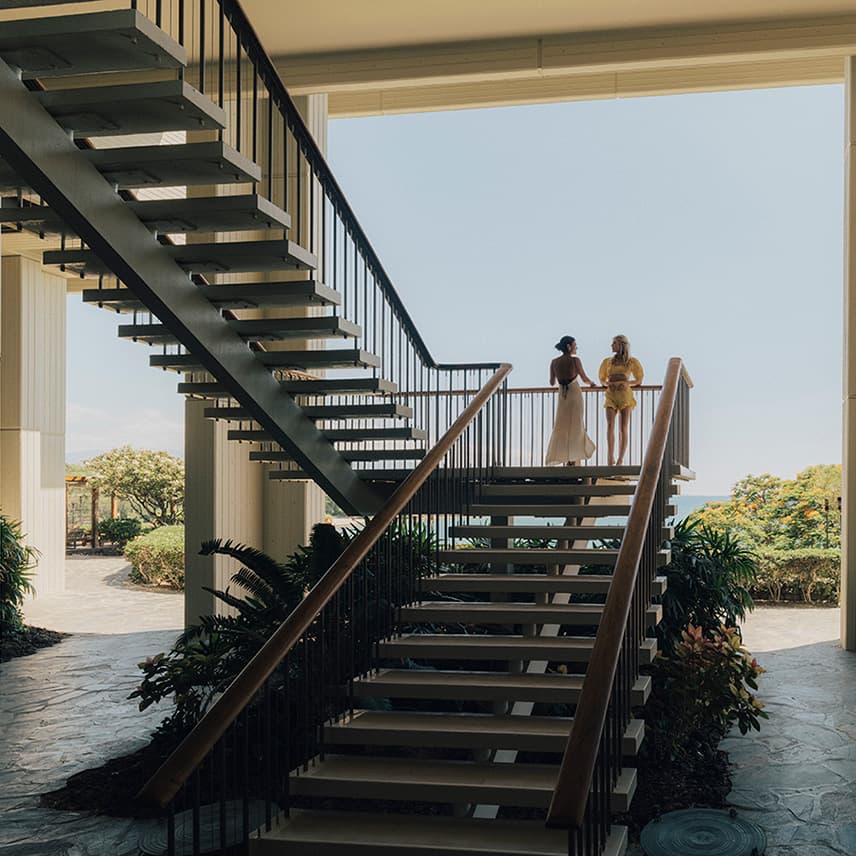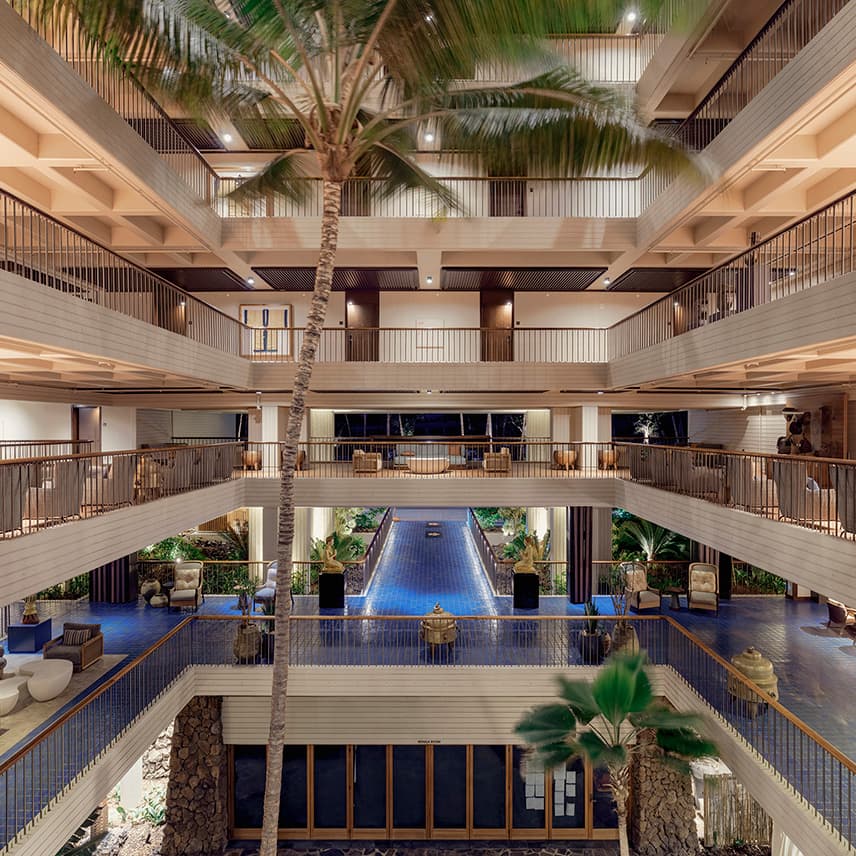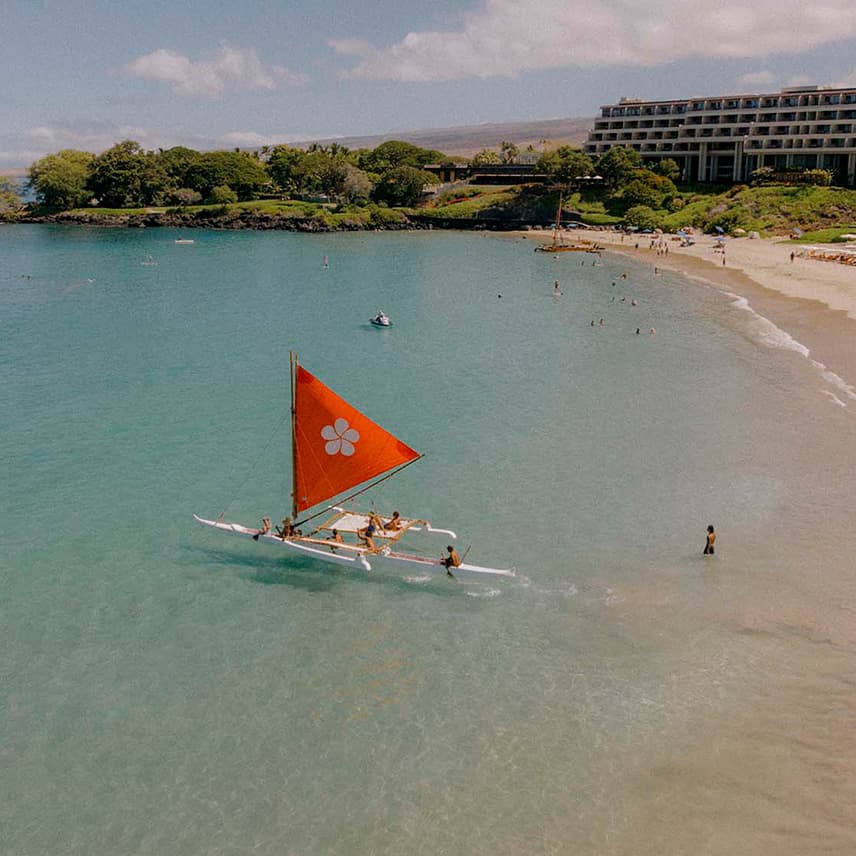History
Swimming in the turquoise waters of Kauna‘oa Bay, surrounded by a vast landscape of lava rock and ranchland, with the majestic summit of Mauna Kea beyond, it’s impossible not to feel the mana (divine power) of Hawai‘i. That’s the experience that inspired American conservationist and venture capitalist Laurance S. Rockefeller to build Hawai‘i’s first resort, one that honored the island’s natural beauty, sacred nature, and deeply held culture. The Mauna Kea Beach Hotel is the result of his vision, which is, to this day, a wholly curated experience, where every choice is intentional, rooted in purpose.
Design Refined
Rockefeller envisioned a hotel that felt like a welcoming and well-appointed home—an amalgamation of Eastern principles, Hawaiian culture, and a Western lifestyle. His original concept for a cluster of cottages evolved into a single structure, which, in the hands of architectural firm Skidmore, Owings, & Merrill and lead architect Charles Bassett, became a paragon of mid-century modern design. The hotel was created as a conduit, integrated into its natural surroundings, and seamlessly connecting the mountains and the sea. Setting foot in the building and taking in the magnificently framed ocean view while a tropical breeze gently blows is truly transportive.
A First for Golf
In December 1964, six months before the hotel was ready to receive guests, Mauna Kea Golf Course opened, becoming Hawai'i Island's first resort course. It was designed by renowned course architect Robert Trent Jones Sr., who pioneered a technique to create soil from lava rock, and gifted the golf world some of its most iconic holes. The course debuted with a televised "Big Three" match between Jack Nicklaus, Arnold Palmer, and Gary Player, some of the sport's most legendary players.
Accolades Abound
When it opened in July 1965 with 154 guestrooms after a $15 million build-out, Mauna Kea Beach Hotel was the most expensive hotel ever built. Praised by travel writers and critics worldwide, it was named one of the "three greatest hotels in the world" by Esquire, one of the "10 best buildings of 1966" by Fortune, and presented with an honors award by the American Institute of Architects in 1967. Room rates, whispered to be exorbitant, started at $43 per night and included breakfast and dinner in the Pavilion, which featured international cuisine.
The New Wing
In the wake of this success, the hotel expanded in 1968 with the Beachfront Wing, designed by Honolulu architectural firm Wimberly, Whisenand, Allison, Tong, & Goo. It continued Mauna Kea's approach of seamless integration, and noted interior designer Phyllis Brownlee brought the interiors to life. Original paintings by Hawai'i Island artist John Young were commissioned for the guestrooms, highlighting the hotel's commitment to the local community, and the Batik restaurant and lounge—though no longer in operation—were opened to expand the hotel's culinary offerings.
A Growing Family
Hapuna Golf Course debuted in 1992, making Mauna Kea an even more desirable destination for golfers of every experience level. In 1994, Mauna Kea Beach Hotel closed for renovation, just months before Mauna Kea Resort's Hapuna Beach Prince Hotel opened in August. The new hotel, also designed by architects Wimberly, Allison, Tong, & Goo, delivered a contemporary resort experience on the south end of Mauna Kea Resort's expansive 1,700 acres. The hotel featured all ocean-facing rooms, extensive meeting and business facilities, and an exclusive villa. Mauna Kea Beach Hotel reopened in December 1995, and the two hotels, along with the property's private homes and villas, established Mauna Kea Resort as a world-class, full-service resort destination and residential experience on the beautiful Kohala Coast.
From Tragedy to Triumph
After a damaging earthquake in October 2006 and the unprecedented $150 million renovation that followed, Mauna Kea Beach Hotel reopened in December 2008. In classic Mauna Kea style, the hotel once again welcomed generations of guests to reconnect with life's most authentic pleasures.
50 Years of Tradition
Mauna Kea Beach Hotel reached a historic milestone—its 50th anniversary—celebrating five decades of helping generations of guests make memories for a lifetime. We also became the first Hawai'i hotel to join Marriott's Autograph Collection, an ensemble of strikingly independent hotels around the country selected for their quality, bold originality, rich character, and singular details.
Historic Hotel Recognition
Mauna Kea Beach Hotel was recognized by the National Trust for Historic Preservation for its deep history and influential lineage, and was inducted into the organization's Historic Hotels of America program, which celebrates the country's finest and most time-honored hotels.
A Hotel and Resort Reimagined
Hapuna Beach Prince Hotel underwent a $50 million renovation, rebranding and reopening as The Westin Hapuna Beach Resort. A portion of the hotel was transformed into the Hapuna Residences, stunning one- to four-bedroom private oceanfront residences that enjoy all the luxuries of the Resort. Together with Mauna Kea Residences and Mauna Kea Beach Hotel, Mauna Kea Resort is unmatched in the experience it offers guests on Hawai'i Island.
Today & Beyond: The Mauna Kea Effect
Mauna Kea is more than a hotel or resort—it's a home. Here we practice aloha 'aina—love of the land, the ocean, and the island's people. Every service and amenity is intentional, and we strive to always be culturally pono (righteousness and goodness), connecting our guests to all that makes Mauna Kea Resort and the Island of Hawai'i so special and unique. It's why generations of families choose to come here year after year. Our guests stay with Mauna Kea because the spirit of aloha stays with them.





